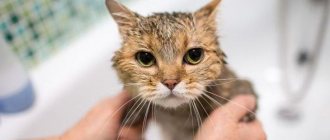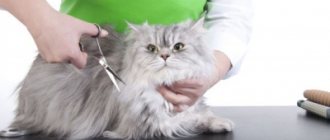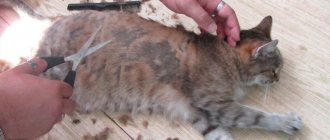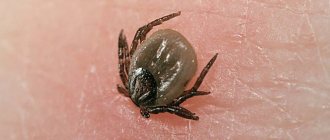Why and how often should cats be washed?
Most pets are exemplary cleanliness. Their tongue is able to clean the fur in a way that any washcloth would envy. But still, over time, the fur can stick together, begin to smell bad and become covered with a layer of fat.
You need to wash it if:
- the animal is not very clean;
- the cat got dirty somewhere;
- the wool began to smell;
- there are fleas and ectoparasites on the body.
The frequency depends on the cleanliness of the cat, the thickness of the coat and the time of year. Long-haired breeds are prone to matting, so they need to be washed more often.
Domestic cats can be bathed approximately 1-2 times a year. Cats that walk along the street - once every 3 months.
DO NOT wash animals:
- during illness;
- if the room is cold or there are drafts;
- if the cat is too afraid of this procedure, severe stress can lead to serious illnesses.
Drying wool after bathing
Take the freshly washed cat into the room and dry it with a towel. For short-haired cats, one towel will be enough, and for long-haired cats, do not skimp on 2-3 pieces. You can place your pet on a newspaper or hoe so that the dripping moisture is absorbed faster.
For your information: a cat has a so-called air cushion between its skin and the top layer of fur. This layer of air is heated by the animal's body heat and protects the cat from freezing. During bathing, the fur gets wet and temporarily loses its thermoregulatory properties, which is why it is so important to warm the cat with towels after washing and protect it from drafts.
If the cat is not afraid of a hair dryer, then about 10 minutes after bathing you can lightly dry his fur. The air flow should be warm, but not hot. If the cat is afraid of electrical appliances, it is better to wait until the “coat” dries naturally.
Use a special comb to comb the fur.
After washing, your domestic cat needs to stay warm for at least an hour.
What you need to bathe cats
Human shampoos are not suitable for washing. The pH of human and cat skin is different. The wrong cleanser can lead to dry skin, dandruff and even ulcers.
To bathe, you must purchase a special shampoo for cats in advance. If your pet has fleas, the detergent should have an antiparasitic effect.
Water temperature is about 37 C°. You will also need two towels to catch the water from the wool.
If your animal is terribly afraid of water, it is better to buy dry shampoo. The powder is applied to the coat and then combed out. It will collect dirt and grease, and also maintain friendship between the cat and the person.
Short-haired cats can be wiped with a wet towel. It will remove dirt and loose hair.
Where to go in St. Petersburg?
- MasterGroom chain of salons.
Addresses of pet salons:
- Degtyarny lane, house 20.
- Kondratyevsky Prospekt, house 64, building 2.
- Bolshevikov Avenue, house 38, building 5.
- Yuri Gagarin Avenue, 14, building 6.
- Listvennaya street, building 18, building 1.
There are discounts in salons. Meeting the master 10%, writing a review 5%.
- Salon Fox. In the market of pet products and services for more than 12 years. In addition to grooming, there is a veterinary pharmacy and a large selection of hygiene products for caring for your pet’s skin and coat.
Addresses of pet salons:
- st. Communes no. 59 (Krasnogvardeisky district, on the territory of Rzhevka).
- st. Leningradskaya 7 (Novy Okkervil microdistrict, Vsevolozhsky district, Kudrovo village).
How to bathe cats correctly
Before the procedure you need to prepare:
- Feed the animal 2-3 hours before washing and do not give it any more food. Stress may cause your pet to vomit.
- Trim his nails. This will protect you from injury.
- Remove all objects from the bathroom that the cat could knock over and break.
- Place a mat or towel on the bottom of the bathtub. This is necessary so that the animal does not slip and feels confident.
- Brush your pet and untangle the tangles.
When everything is ready, pick up the cat and take her to the bath. Place it on the bottom and hold it with a confident hand. Loosen your grip, and the animal will immediately take advantage of this and jump out. But under no circumstances cause pain!
Gently wet the fur with a gentle stream of water from the shower. Strong pressure and noise will scare your pet. You can water it with water from a basin. It is important that the liquid does not get into the nose and ears. The latter can be plugged with cotton balls.
Then lather the cat's body and massage. The chin and paws are washed last. Rinse thoroughly with water. If necessary, repeat lathering.
At the end of the procedure, you can apply conditioner. It will help wash away any remaining shampoo and make the coat soft and shiny.
It is important to speak kindly to your pet while washing. Movements should be careful but confident.
Upon completion of the water procedures, squeeze the water out of the fur, wrap the cat in a towel and take it out of the bath. Then place it on a second towel, wrap it around it and gently rub the fur.
It is not necessary to dry your cat. It will dry itself perfectly. You can use a hairdryer if:
- the animal is not afraid of him;
- the house is cold;
- the day before the exhibition.
The air stream from the hair dryer should be at a temperature of about 40 C°. You cannot blow in the face - this is a threat to the cat.
What's the best way to wash your mustachioed friends?
Owners often use regular human shampoo or soap to wash their pets. Not everyone knows that this should not be done - you cannot bathe cats with ordinary or even children's products. A special shampoo with a special composition is developed for their skin type. There are two types of shampoo:
- Liquid shampoo - cares for the coat thanks to its natural ingredients.
- Dry shampoo is a product for applying to an animal's fur without using water. If it absolutely refuses to be bathed, then you can use the combing method using a dry cat wash. Visually, the shampoo resembles baby powder.
© shutterstock
Kitten's first bath
You should start bathing a kitten at 4 months of age, not earlier. Babies are extremely sensitive to temperature changes, and improper bathing can lead to serious consequences.
You can start training 2 weeks after the complete change of teeth. For the process to go smoothly, you need to convince the kitten that water is not dangerous. To do this, place a bowl of water in the room and throw rubber toys there. The baby will become interested and try to play with them.
Then you can wash your paws, under the tap or in a basin. Pour some water into it and place the kitten. If the baby does not run away in panic, he is already ready for water procedures.
If fear is present, you can distract your baby with squeaky toys while washing. If you have a helper, ask him to blow soap bubbles. While the kitten is watching them, you can have time to wash it completely.
Where to go in Moscow?
- Fluffy happiness. Addresses:
- N. Cheryomushki, st. Garibaldi, 15.
- st. Kastanaevskaya, 17.
In addition to highly qualified groomers, a veterinary office is open here twice a week. There is a large selection of accessories, clothing and pet comfort products.
- Chain of pet salons Baluti.
Addresses of pet salons:
- M. Kuntsevo, Kastanaevskaya, 58.
- m. Marksistskaya, Ryazansky Ave.
- m. Varshavskaya.
- m. Tulskaya.
- m. Shchelkovskaya.
In salons there are discounts on services for kittens, check with the administrator. There is also a late appointment for busy people, but be careful, the cost of procedures will be increased by 50%.
In addition, there is a service to call a master groomer to your home. If you have a long-haired cat, you can handle it yourself - just read our article .
Watch the video: MY CAT - See how to do it correctly
Adult cat's first bath
An adult cat may react violently to attempts to place it in water. Therefore, patience is needed here. It is advisable to familiarize your pet with the environment in the bathroom in advance. To do this, put it in a dry bath and throw in your favorite toys. When the animal stops running away in panic, you can begin the first wash.
How to wash a cat for the first time in its life:
- Pour a few centimeters of water into the bath.
- Grasp the animal confidently and lower it smoothly.
- Apply water to the wool by scooping it out of the bathtub. If the cat is calm, this can be done from the shower.
- Lather the fur with shampoo and rinse thoroughly.
- Wrap the cat in a towel, blot it dry, and then dry it with a second towel.
The first bath should not take much time. An unpleasant and unfamiliar procedure will bring a lot of stress to your pet.
How to wash your cat's eyes and ears
So, even the most capricious cat was washed, but during bathing we went around the eyes and ears, and they should also be clean.
The cat's eyes are wiped with a cotton swab dipped in clean boiled water or a weak solution of tea or chamomile. Movements should be light, no need to press or rub your eyes.
It's time for ears. There is no need to clean them unless they become dirty. However, after washing the cat, water could get into the ears. You need to wipe the outer part of the ear with a cotton swab, on which it is better to twist an additional layer of cotton wool. Use a clean stick or dip it in a drop of Vaseline oil. Water and other liquids cannot be used. As a rule, cats love to clean their ears and are happy to present them to their owner. Healthy cat ears should be pink, clean, and free of unpleasant odor.
How often to bathe different cat breeds
Any animal should be bathed once every 2-3 months if it walks around the yard.
Hairless cats (sphynxes, elves, etc.) can be bathed more often - once a month, and in winter - once every two months. As a rule, these cats love water and are not averse to swimming.
White, beige and peach cats need frequent bathing. They are washed with a special shampoo for light coats.
How to choose shampoo?
Only specialized detergents, separated by fur type, are suitable for bathing a cat. As an option - tar soap, it also cleans well and gets rid of skin parasites and inflammation of the dermis.
Shampoos intended for human use should not be used. They contain ingredients that provoke allergies, dry out thin and delicate skin, causing the formation of dandruff.
If you need advice and don’t know how to bathe a cat correctly, call the RosVet VC and make an appointment by phone. Experts will provide comprehensive information and recommend the type of detergent. The clinic is open 24 hours a day.
And some more tips on washing cats
- Do not bathe a pregnant cat or if she is nursing kittens.
- An adult, unneutered cat needs more frequent washing. Due to the secretion secreted, his fur gets dirty faster, becomes greasy and sticks together.
- At least two weeks must pass after the operation, and only then can the animal be bathed.
- If you adopted a pet from a shelter, you should not wash it in the first few days. Moving and swimming together is incredibly stressful.
- During the shedding period, washing helps to quickly get rid of dead hairs.
- Do not wash your animal while it is sick.
So, the frequency of bathing is a conditional indicator. It depends on the cat’s cleanliness, the characteristics of its lifestyle and conditions of detention. An attentive owner will always understand that his pet needs additional care and will carry out water procedures with maximum comfort.
To bathe or not
Veterinarians advise: bathe. There are many reasons why periodic baths are beneficial for your pets.
Why does a cat need to be bathed?
- Removing fleas. The most effective way to get rid of these parasites is to bathe your pet in a special shampoo. This product can be purchased at a pet store.
- Dirt. Even something as clean as Murki sometimes gets dirty. Most often, small kittens manage to find dirt. Also, some animals, especially older ones, are not able to care for their coats, so they need help.
- Shedding. A good way to reduce shedding is by bathing. Fallen hairs are washed away along with water, which helps reduce their number on furniture and surfaces in the house.
Hence the conclusion: your pet needs to be washed. Many owners are interested in how often cats can be washed. There is no clear answer to this question. It all depends on the reason for water procedures. It is also important what time of year the washing is carried out.
Choosing between soap and special shampoo
Taking a bath too often is not recommended even for humans. Exposure to household chemicals on the skin can have a negative impact in the form of an allergic reaction, irritation, redness, peeling and many other unpleasant aspects.
Along with the question “how to bathe a cat?” there is uncertainty with the choice of detergent for the animal. Pet owners often doubt the need to purchase a special shampoo that is ideal for cat hair. Many people mistakenly believe that they can wash a meowing pet with laundry soap.
It is worth weighing the pros and cons of this hygiene product before bathing your cat. Veterinarians assure that laundry soap negatively affects the condition of the animal’s skin, drying and tightening it. In addition, after bathing, the cat's fur may become coarser and seborrhea may appear, which causes severe itching. By choosing a high-quality moisturizing shampoo for your pet, you can avoid many problems and give your cat’s coat a healthy shine and silkiness.
Features depending on breed
The meaning of bathing and the procedure for carrying out this procedure are similar for all cats, but have distinctive nuances for some breeds. It should be understood that cats with long, short, thick, curly hair, as well as representatives of hairless breeds, require an individual approach.
Longhair
Breeds such as Persian, Maine Coon, Turkish Van and others. Before bathing, you need to thoroughly comb your pet with a brush, check if the fur is matted, and remove all tangles. When washing, it is important to rinse your hair thoroughly, wash it carefully so as not to pull the strands, which can cause pain to your pet, and wash off the foam well.
You should choose a shampoo designed for long-haired cats, taking into account the type of hair (fluffy, smooth, straight, etc.). If the coat is prone to matting, it is useful to use shampoos for detangling, as well as additional conditioners, masks or lotions, so that it is convenient to comb your pet in the future. Long-haired pets should be bathed 1.5 - 2 times more often than short-haired ones, however, it is also not necessary to subject your pet to water procedures.
With plush fur
These are breeds with a very thick, short hair - Scottish, Toyger, British, Ocicat, Chartreuse and others. Shampoo for short-haired cats, as well as one specially designed for representatives of these breeds, is well suited for bathing such pets. The difficulty is that such thick wool is inconvenient to completely wet and then remove the remnants of the cosmetic product. Therefore, you need to carefully moisturize the hair before applying shampoo, and when rinsing, make sure that no foam remains on the cat.
Shorthair
These are primarily representatives of such breeds as: American and European Shorthair, Oriental, Havana, Belgian and others. There are no special features in bathing, the main thing is to choose the right shampoo appropriate for the age and breed, and also adhere to the general rules of bathing.
Curly
Some of these breeds are LaPerm, Cornish Rex, Devon Rex, Selkirk Rex and others. These pets are bathed as needed, keeping an eye on the condition of their hair. Particular attention should be paid to long, curly hair, as improper care can cause the curls to become somewhat straightened and become less attractive. You should not wash representatives of such breeds unless necessary. An important point is care after bathing. Such pets are dried well, preserving the curls of the hair, and gentle tools are used for combing.
Bald
Now there are already many such breeds - Don Sphynx, Canadian Sphynx, Peterbald (Petersburg Sphynx), Bambino, Dwelf, Minskin, Ukrainian Levkoy, Elf, Kohana and others. Bathing such pets is a separate issue, since they either have no hair at all, or the hair is too short and sparsely growing (velor cats). If such a cat gets dirty, it can be bathed in warm water using a special shampoo or soap for hairless cats, however, experts advise minimizing such procedures and replacing them with regular wiping of the pet with a soft cloth. There is no need to wet such cats unnecessarily - they freeze easily and can catch a cold.
Bobtails
Apparently, almost all cats from the Bobtail group inherited a love of swimming from their wild ancestors. And not necessarily in a warm bath. They enjoy splashing around in natural bodies of water while out for a walk. These are American, Japanese, Karelian and Kuril Bobtail, and Mekong, and Pixie Bob.
How to train a cat to use the bathroom?
Some owners of furry four-legged animals approach bathing their beloved cat with excessive fanaticism. They wash the animal almost every day, without even thinking about whether it is possible to do it so often. Of course, a “bathhouse” will undoubtedly benefit the cat if the entire bathing procedure is carried out as it should, with the correct frequency, while observing certain subtleties.
In principle, no special knowledge is required on how to wash a cat. The most important thing is to accustom your pet to the bath in early childhood. The first bath of a one-year-old animal can result in not only scratched and bitten hands for the owners, but also extreme stress. It is quite difficult to restrain a kicking cat who is screaming in a voice that is not his own, constantly breaking out. In such cases, the pet is washed by the whole family - one person cannot cope with a raging cat.











